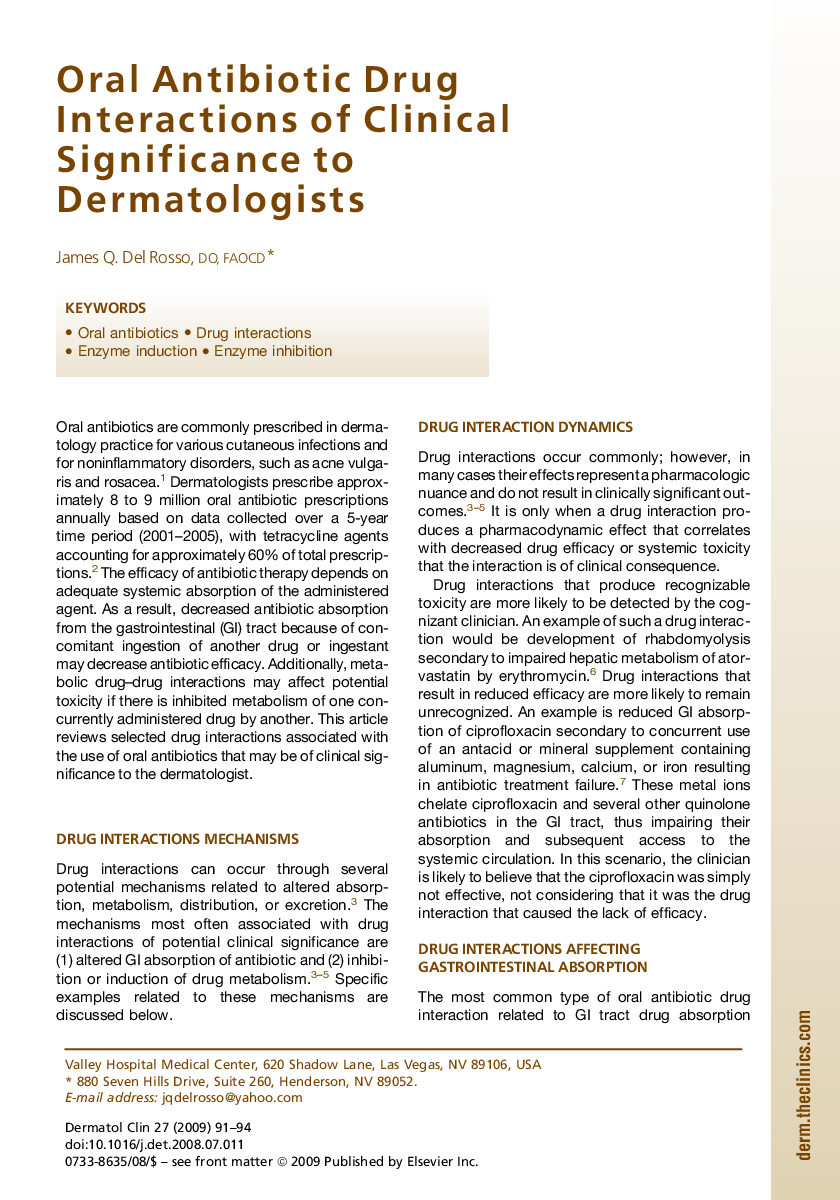| Article ID | Journal | Published Year | Pages | File Type |
|---|---|---|---|---|
| 3196056 | Dermatologic Clinics | 2009 | 4 Pages |
Oral antibiotics are commonly prescribed by dermatologists in clinical practice. When prescribing an oral antibiotic, as with other systemic medications, it is important to consider potential interactions with other drugs, including over-the-counter medications. The most common drug interaction mechanisms that may lead to clinically significant sequelae are inhibition of GI drug absorption and alterations in drug metabolism. Tetracycline and quinolones undergo chelation interactions with many metal ions found in antacids and mineral supplements. Some macrolides, such as erythromycin, inhibit the hepatic metabolism of many other drugs, increasing the risk for toxicity. Rifampin increases the metabolism of many other drugs, thus predisposing to treatment failure. Drug interactions can only be averted if their potential is understood and recognized in advance.
